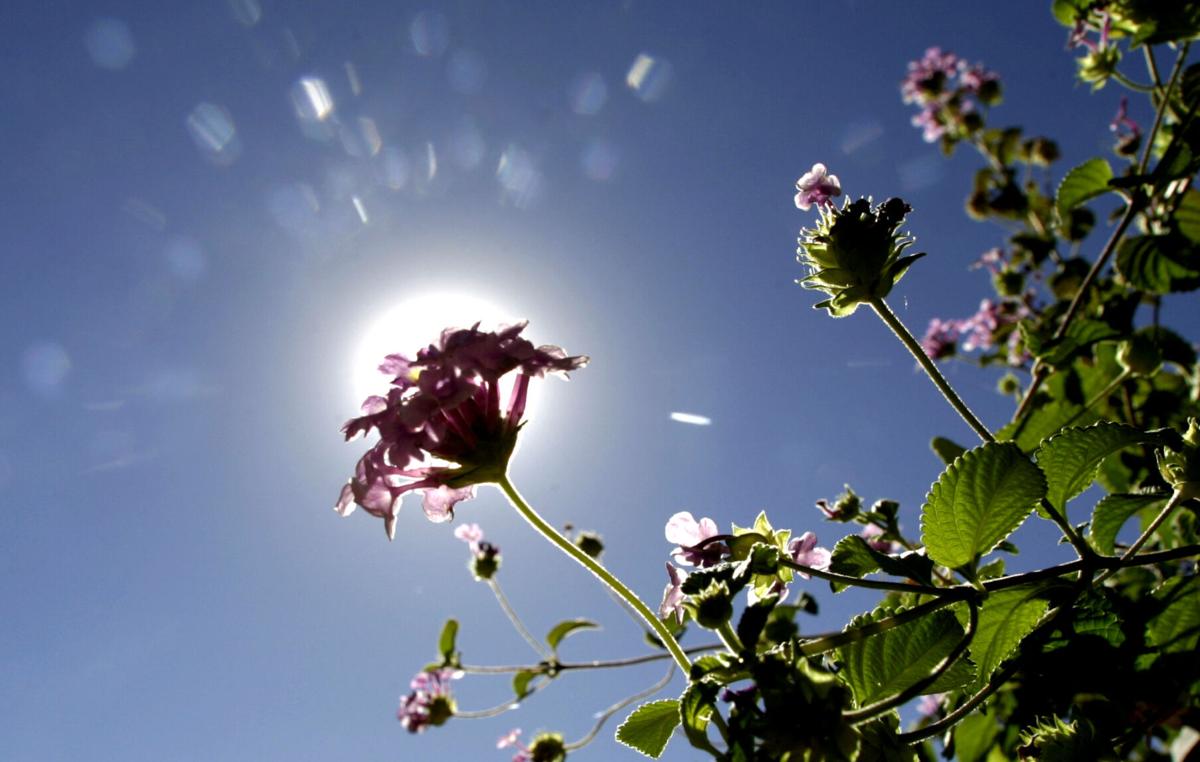As our summer heats up and we get close to the summer solstice, it’s a good time for gardeners to evaluate how we use shade cloth in our gardens.
Shade cloth is useful in our climate for a number of reasons. For one thing, providing shade to our plants is a good way to create a cooler microclimate for them, thus reducing their overall stress and their need for water. It can also mean the difference between life and death for some plants, particularly ones that are not native. Shade cloth can also allow us to grow plants here that otherwise would die in our heat and extreme sunlight.
Shade cloth is also useful for people. It’s a relatively inexpensive way to get a shady space to sit, play, or just hang out in our gardens. It can be very useful if you don’t have large trees in your yard yet to provide shade, and is a relatively easy temporary fix for a sunny, hot yard while you wait for your planted trees to get bigger.
Choosing the right shade cloth can get a bit complicated — it comes in two varieties (knitted or woven) and different colors and densities. So which one do you pick? It depends on your application.
If you’re shading people or animals, choose a high density cloth like 90% or more. White or light tan is best here, since it will reflect more heat and result in a cooler space under the cloth.
Most non-native plants will need at least 40% shade cloth, and as much as 80%, depending on the plant. Veggies generally do well with 40-50%. Most other non-native sun-loving plants fall between 40-60%. Color is a little less important here, but again, white cloth will reflect the most sunlight (and thus heat and radiation). Black and dark green are less visible in your garden, so if you’re concerned about aesthetics, you can choose one of these colors.
If you’re trying to grow shade-loving plants outside, you will want around 80-90% shade cloth. Depending on your growing area and the microclimates in your space, you may want to go with white cloth for maximum cooling.
You can also help your landscape cacti through the summer by giving them a bit of shade. This is particularly important for cacti that have been planted in the past two years, since they have yet to establish their roots fully. About 30% shade cloth will help them out while still allowing plenty of sun in.
Shade cloth is either knitted or woven. The knitted kind is made from polyethylene. You can expect it to last up to 10 years. It has threads running in different directions, so it’s more resistant to holes and tears. It’s probably the best option for cacti and other thorny or spiky plants. It is UV-resistant, and can stretch and shrink. It’s also pretty lightweight. It tends to allow more air movement so it reduces heat buildup under the cloth.
Woven shade cloth is made from polypropylene. It’s heavier than knitted cloth (and also more expensive). It does not shrink or stretch much. It’s UV-stabilized, so it lasts a bit longer — up to 12 years. However, the edges must be sealed in some way or it will fray. It’s vulnerable to holes and tears for this reason.
Knitted shade cloth is probably overall better for our climate, since it is more breathable; however it’s also less UV-resistant. For the average gardener or homeowner, it’s also less expensive and easier to install due to its lighter overall weight and resistance to fraying.
You may also want to consider a third type — Aluminet shade cloth. This is shade cloth made of aluminum woven in with polyester or polypropylene. Its claim to fame is that it reflects a lot of heat away from your plants (or you, depending on where you use it.) This makes it great for climates such as ours. The agricultural industry uses it on their greenhouses in the summer to reflect heat away. The cloth also diffuses light underneath it, so that plants get a nice, even exposure. It is between three to 10 times more expensive than regular shade cloth. It may be worthwhile for a sitting area or driveway or a space for pets or other animals. It will be bright under it, however, so consider that.
When you use shade cloth on your garden plants, make sure the shade cloth isn’t touching the plants directly. That can damage some plants, due to the high temperatures it can reach. It also can get tangled in plant branches. Make sure you attach it with clips or wire to a structure that goes over your plants, rather than relying on the plants to hold it up. You will also need to check it over periodically and make sure it’s not developing holes. Depending on the location of your plants, you may also need to adjust your shade cloth, or remove it entirely, with the changes in seasons.
Make more plants from the ones you already have. This video shows you how to propagate your plant using cuttings. Video by Dominika Heusinkveld/Arizona Daily Star





